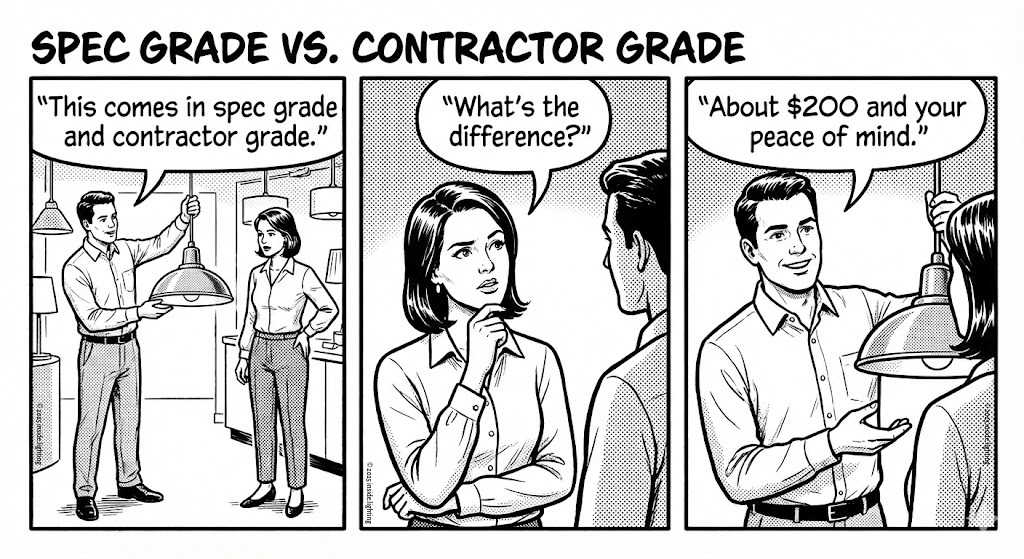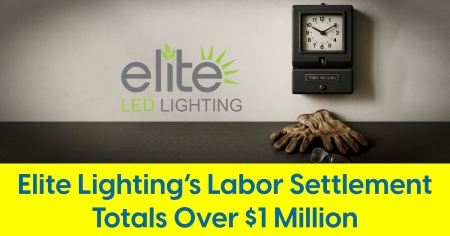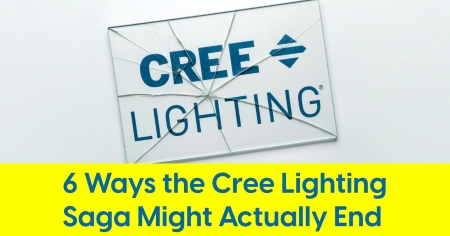February 25, 2025
Price Freeze Myth: No One Can Swallow a 25% Tariff

Companies exposed to Mexico and Canada brace for a potentially turbulent 2025
Three weeks after pausing a set of 25% tariffs on Mexico and Canada, President Donald Trump announced Monday that they “will go forward on time, on schedule.” But as with many policy statements made from a lectern, nothing is final until the legal steps to enact the tariffs are completed — leaving room for negotiations, pivots or another pause.
The lighting industry, which relies heavily on manufacturing and materials from both Mexico and Canada, now faces the possibility of higher costs, supply chain disruptions, and foreign retaliation. Yet despite the clear risks, several lighting manufacturers have rushed to reassure customers that there will be no immediate price increases.
Is that a realistic expectation for all of 2025? Not for most companies.
Why Some Companies Are Holding Prices (For Now)
There are valid reasons why certain manufacturers are saying they don’t expect price hikes — at least not yet.
- Limited Exposure: If a U.S.-based brand manufactures domestically and sources most of its components from American suppliers, it may have little exposure to these tariffs. These companies could possibly continue business as usual, mostly unaffected by the trade war.
- Stockpiling Inventory: Manufacturers and distributors know exactly which products drive most of their revenue. Instead of carrying a couple of months’ worth of supply, they may be aggressively stockpiling their top 200 to 500 SKUs to delay the impact of tariffs. This tactic allows them to maintain stable pricing for now, even though a future increase may be inevitable.
The Harsh Reality: Most Companies Can’t Absorb a 25% Tariff
But let’s be clear — many lighting companies do have significant exposure to Mexico, Canada, or China. And the notion that they can simply absorb a 10% or 25% tariff without passing those costs onto customers is absurd. Earlier this month, the U.S. also implemented an additional 10% tariff on Chinese imports, adding another layer of cost pressure. Many finished goods and lighting components, including LED drivers and chips, are sourced from China.
What’s more likely happening is that companies are burning through pre-tariff inventory and stretching their supply chain strategies to delay price hikes—not avoid them altogether. Once existing stock runs out, those facing significant tariff exposure will have no choice but to raise prices.
What If Acuity’s Last Quarter Included 25% Tariffs?
Acuity Brands is one of the few lighting manufacturers with publicly available financial data, making it a useful case study. It’s also one of the most profitable companies in the industry and has seen its stock surge over the past year due to consistently high margins. Yet even Acuity, with all its financial strength, would struggle to absorb a 25% tariff without increasing prices.
To illustrate this, let’s apply a 25% Mexico tariff to Acuity’s most recent quarter and see the potential impact.
- Revenue: $951.6 million (unchanged)
- Revenue from Mexico-made products (estimated 53% of total): $504.3 million
- Estimated production cost for Mexico-made products (52.8% of revenue): $266.4 million
- New tariff cost (25% of $266.4M): would have been at least $66.6 million in extra expenses. Likely much more.*
If Acuity absorbed a tariff without raising prices
- Gross profit would have dropped from $449.3 million to $382.7 million
- Gross margin would have fallen from 47.2% to 40.2%
- Net income would have plunged from $106.7 million to $40.1 million
- Net margin would have shrunk from 11.2% to just 4.2%
That’s a 60% drop in profits in just one quarter. No manufacturer — no matter how profitable — can absorb that kind of hit indefinitely. If tariffs take effect, expect price increases.
*This simplified example assumes intra-company sales from a Mexican subsidiary to a U.S. subsidiary to minimize tariffs. In reality, the impact would be greater for direct shipments to U.S. customers, as tariffs are based on import value. This method may still not satisfy the arm's length principle, but the calculations are intended to paint a best-case scenario. Finally, Acuity's Mexico-made goods are largely U.S.-bound, but exports elsewhere wouldn’t face U.S. tariffs.
What Happens Next?
For now, lighting manufacturers with exposure to Mexico, China and Canada may continue shipping out existing inventory while avoiding price hikes. But once stockpiles run dry and if new, tariff-impacted products hit the supply chain, higher prices will follow.
- Distributors and contractors should be prepared for gradual price increases over the coming months.
- Manufacturers may attempt to restructure supply chains or absorb partial costs, but few— if any — will fully shield customers from tariff-related increases.
- If Canada and Mexico retaliate, expect additional disruptions in exports and trade flows.
Trump’s tariffs may appear to be moving forward, but nothing is set in stone yet. If negotiations stall or retaliatory measures escalate, the lighting industry could be in for a turbulent year.










